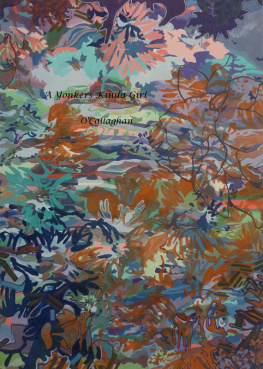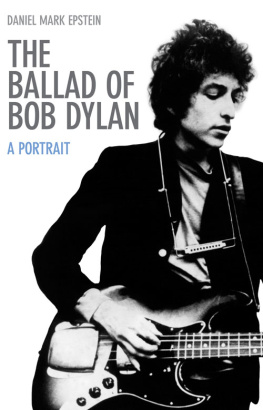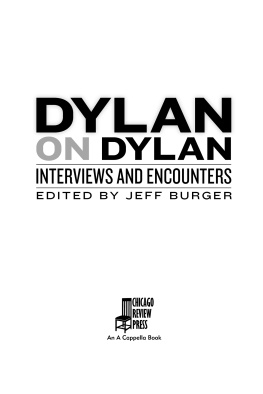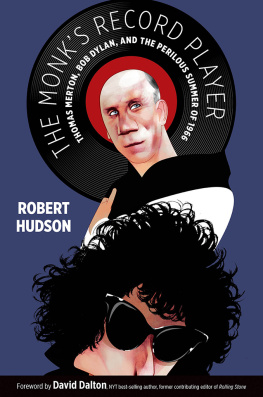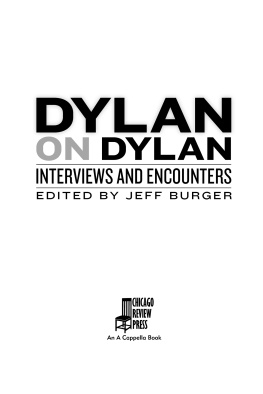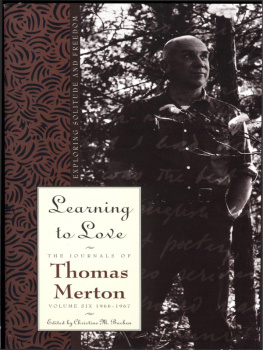Also by Robert Hudson
Four Birds of Noahs Ark: A Prayer Book from the Time of Shakespeare
(by Thomas Dekker, edited by Robert Hudson)
Kiss the Earth When You Pray: The Father Zosima Poems
The Christian Writers Manual of Style
Companions for the Soul (with Shelley Townsend-Hudson)
Beyond Belief: What the Martyrs Said to God (with Duane W. H. Arnold)
THE MONKS RECORD PLAYER
Thomas Merton, Bob Dylan,
and the Perilous Summer of 1966
Robert Hudson
Foreword by
David Dalton
WILLIAM B. EERDMANS PUBLISHING COMPANY
GRAND RAPIDS, MICHIGAN
Wm. B. Eerdmans Publishing Co.
2140 Oak Industrial Drive N.E., Grand Rapids, Michigan 49505
www.eerdmans.com
2018 Robert Hudson
All rights reserved
Published 2018
Published in association with the literary agency of
Credo Communications, LLC, Grand Rapids, MI 49525
www.credocommunications.net
27 26 25 24 23 22 21 20 19 181 2 3 4 5 6 7 8 9 10
ISBN 978-0-8028-7520-4
eISBN 978-1-4674-4949-6
Library of Congress Cataloging-in-Publication Data
Names: Hudson, Bob, 1953 author.
Title: The monks record player : Thomas Merton, Bob Dylan, and the perilous summer of 1966 / Robert Hudson ; foreword by David Dalton.
Description: Grand Rapids : Eerdmans Publishing Co., 2018. | Includes bibliographical references and index.
Identifiers: LCCN 2017048811 | ISBN 9780802875204 (hardcover : alk. paper)
Subjects: LCSH: Merton, Thomas, 19151968. | Dylan, Bob, 1941Influence. | Baez, Joan. | Popular cultureUnited StatesHistory20th century.
Classification: LCC BX4705.M542 H83 2018 | DDC 271/.12502dc23
LC record available at https://lccn.loc.gov/2017048811
To Susan Hudson Fox,
who introduced me to the music of Joan Baez,
and Richard F. Hudson,
who first exposed me to the songs of Bob Dylan
and to our late parents,
George Ray and Barbara Hudson,
who instilled in us
a deep love for books and music
La musique est une joie invente par le silence.
THOMAS MERTON
CONTENTS
Part One
Utopian Hermit Monk
(April 1941 to August 1965)
Part Two
She Speaks Like Silence
(March to July 1966)
Part Three
The Lonesome Sparrow Sings
(July 1966 to October 1968)
The Directors Have Engineered a Surprise
You Will Not Easily Discover
When Bob Hudson first told me about his idea for the book he was writing, I thought, Oh well, we all have our eccentricities, our odd hobbiesalthough some a little more odd than others. Im all in favor of writing a book about any wild thing under the sun, bringing in whatever quirky thing floats through your mind (thats what books are). But then Bob asked if I would write the foreword. At first I thought, Why me? Arent we friends? Didnt we bond through our mutual obsession with the hipster saint Bob (Dylan)? I would do anything for himI wouldnt have been able to write my Dylan biography without him. But, I ask you, do real friends ask friends to corroborate their nutty theories?
You may think, as I at first did, that pairing a Utopian hermit monk and a demon-haunted rock star is just plain perverse or at the very least willfully paradoxical. But there youd be dead wrong. Paradox, as Kierkegaard pointed out, is simply a great idea in embryoand thats what The Monks Record Player is, a profound meditation on apparent contradictions. With a deft, witty, and philosophical hand, Hudson shows us that Bob Dylan and Thomas Merton were at a certain point in time almost interchangeable. Well, as writers anyway, thinkers and diviners of strange truths. Its a little like String Theoryit takes a while to get used to.
I now saw the light: Thomas Merton and Bob Dylan were Siamese twins joined at the hippocampus. One an orphan (Merton), the other (liar-liar-pants-on-fire Dylan) claiming to be oneas well as a number of other unlikely things: a foundling, the son of an Egyptian king, a boy adopted by the Oglala Sioux, a tent-show kid looking after the bearded lady, etc.
After all, why wouldnt two people as inventive, desperate, supernaturally talented, and aghast at the temper of the times have a lot in common? Well, thats why youre reading this book.
Its too bad they never met, but we could easily arrange it at, say, the Existential Caf. Dylan is perusing the menu. What are you gonna have, Father? Bob asks. Tom, Merton tells him. Please call me Tom. On another occasion Merton might have said, Two cheeseburgers, a chocolate milkshake, and a large order of fries, because hes a true devotee of Zen masters and junk food. But these are two poets talking, and poets, as we know, talk in metaphors.
So Tom, whats your favorite dish? Let me see... , Merton says. Broiled Ren Char, caf noir la Andr Breton, a taste of Rubn Daro, Miguel Hernndez, Edwin Muir, and a couple of Desert Fathers on the side. And you, Bob, what do you fancy? Oh, the usual. A couple of French Symbolists, marinated in Rimbauds Seasoned in Hell sauce, and the Comte de Lautramonts signature dish, Spleen de Maldoror, hard-boiled and raving.
In 1966 Merton declared his intention to write a new book now, in a new way, in a new language too. Rimbaud, the high priest of Symbolist alchemy of the word, had decreed, Inventing the unknown demands new forms. So it was just a matter of finding the language for what he was setting out to do. Dylan had already kicked open that door for him, and Merton caught on to the new meta-lingo fast.
Cables to the Ace: Or, Familiar Liturgies of Misunderstanding, written in 1966, is the book, as Hudson points out, where Merton goes electric. With the unending vroom vroom vroom of guitars, Merton insists, we will all learn a new kind of obstinacy, together with massive lessons of irony and refusal....
Some sort of vinyl virus has got ahold of Thomas Merton; hes burning up. Hes got a bad case of Dylanosis. Worse, hes deliberately infected himself with the wild mercury fever. Where did he catch it? Where else would you get Dadaist dissociation on vinyl? Dylans liner notes to Bringing It All Back Home and Highway 61. Mertons bogged down amid tree frogs and rain, his healer-lover can only revive him through her distant radio-electric loving glance (phone calls), and in section 70 of Cables hes really rolling down the track as he summarizes the plot of a TV show this way: Riot woman transformed into savings bonds is traced to unforgettable swans for the entire ruin of one season. (Now thats a show Id like to see!)
When characters with bizarre namesPolo King, Uncle Sled, Jack Sound, Miss Daisy, the subliminal engineer, Pocahontas a jungle nunstart showing up in Mertons poetry, youre not sure whether theyre playing cards, comic-book characters, or names out of the Bob Dylan telephone directory. He sees Little Red Riding Hood in chains, Coleridge... swimming in Walden Pond, and The midnight express / Bringing Plato, Prophets, Milton, Blake. Well, if I can find the schedule, youll find me on the platform waiting for that train.
In Cables to the Ace, Merton is someplace else entirely from his earlier poetry. Once you sign the register, youve checked into the Merton Motel, where they have daily, weekly, and special rates for eternity. The realm of the spirit is two doors down the hall, the night clerk tells you. There you can obtain more soul than you are ready to cope with, Buster. When a midget pops out of room 27 and madly cries Hats off! Hats off to the human condition!, you dont know whether to rejoice or run.
The parallel trajectories of Merton and Dylan probably had nothing to do with angels or time spirits, and a lot more to do with the temper of the times. If you want to know what it was like to be alive in 1966, its right there in the grooves of Dylans LPs and on the pages of Mertons




